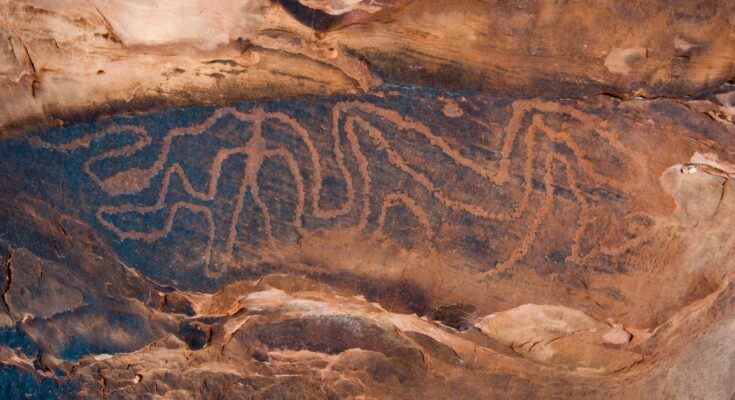Archaeologists in Venezuela have discovered twenty 4,000-year-old rock art sites in Canaima National Park in the southeastern part of the country. These had previously remained undiscovered and may actually be from an unknown culture.
Although archaeologists have found rock art designs akin to these newest ones in other parts of South America, this latest discovery “represent[s] a new culture previously unknown,” Jose Miguel Perez-Gomez, an archaeologist and researcher at Simon Bolivar University in Caracas who is leading the team, told Live Science.
The Rock Art in Venezuela
Some of the patterns, which researchers refer to as pictograms, were etched in red and depict geometric motifs such as lines of dots, rows of X’s, star-shaped designs, and straight lines that link and connect to form a variety of designs.
The rock art sites in Venezuela also feature simple depictions of leaves and stick figure sketches of people. Furthermore, a few of the images, known as petroglyphs, were carved into the rock and also convey a variety of geometric motifs.
The researchers are not certain why people produced this art. “It is almost impossible to get into the minds of people living so many [thousands of] years ago” Pérez-Gómez told Live Science, but “definitely these signs had a ritual meaning.”
“For instance, the different depictions may be related to birth, diseases, the renewal of nature or good hunting. The places where the rock art was created most probably had a meaning and an importance within the landscape, just as the churches have a meaning for people today,” he added.
Although it is not known precisely how old the rock art is, similar rock art in Brazil has been dated to about 4,000 years ago, but Perez-Gomez believes the examples in Venezuela may be older.
Canaima National Park covers an extremely large area, around the size of Belgium, that includes mountain and forest terrain. One of its more notable landmarks is Angel Falls, the highest waterfall on land in the world.
The park might have been the original place where this unknown culture first developed, Perez-Gomez told Live Science, adding that they may have later dispersed to places as far away as the Amazon River, the Guianas and even southern Colombia, which all feature rock art akin to the newly found sites in Venezuela.
Also uncovered at the rock art sites were the remains of ceramics and stone tools, which could have been used by the people who produced the drawings. However, further study is needed to ascertain this. Perez-Gomez told Live Science that more rock art sites are likely to be found in Canaima National Park as research continues.
The research was first presented at the “New Worlds New Ideas” prehistoric archaeological congress held in Valcamonica, Italy.



